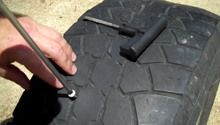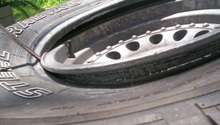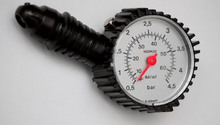Ford F-150/F-250: Why are My Tires Going Flat?
This article applies to the Ford F-150 and the Super Duty F-250 and F-350.
Does your Ford F-150 or Super Duty have a leaky tire? Below are steps to quickly discover and repair a tire that's losing air, potentially saving you time and money.
Step 1 - Punctured tire

Finding a nail in a tire makes locating and fixing the problem a breeze. A knobby, protruding nail makes itself easy to find visually or by touch. If you suspect a nail is the culprit, visually inspect the tire first.
You can also run your hands around the tire, but be careful not to cut yourself on it—the necessity of a tetanus shot will only ruin your day that much more.
If you've got a puncture that is too small to see or feel, you can find it using water and soap. First, make sure the tire has air in it. If there's a hissing noise that you can't pinpoint, begin lathering up that area. The idea is to cover the hole with soapy water and watch for bubbles from escaping air.
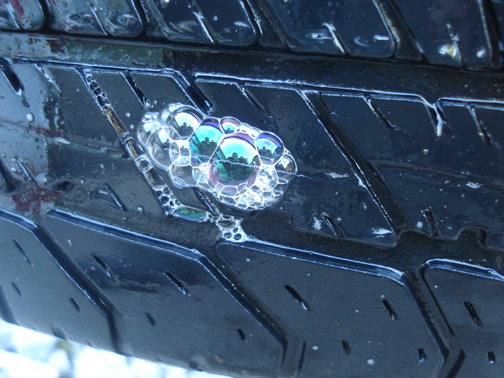
"Why is this happening?"
Occasionally, a tire will catch a nail or some other debris sharp enough to cut through the rubber. There's not much you can do to avoid it aside from the obvious recommendations of not driving over anything sharp.
After you've temporarily remedied your blown tire, take it to a tire repair shop for a proper plug and patch combo. Otherwise, you run the risk of going flat again or catastrophically damaging the punctured tire.
Step 2 - Leaky valve stem
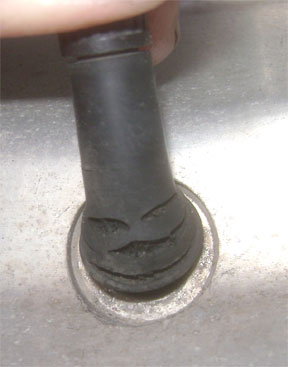
If the leak is difficult to find, you can always use the soapy water trick. This works for both nails, and the peskier valve stem issues. Take a spray bottle with a 20/80 mixture of liquid soap and water, and spray it on the tire and valve stem area.
Bubbles should start to form and burst where the leak persists. A tire repair shop can quickly replace a valve stem for very little cost, though you can go all MacGyver and do it yourself.
(Related Article: How to Replace a Valve Stem - Ford-Trucks.com)
"Why is this happening?"
A seal going bad causes a leaky valve stem. This happens in time due to age, hard road conditions, tire damage, poor maintenance.
Step 3 - Bent rim

A bent rim doesn’t mean disaster, though it can get quite costly. Most bent rims are caused by malicious potholes or hitting a curb. A bent rim doesn’t have to leak air, but it can make itself known in other ways.
The bent rim could be out of balance and cause a shaking through the steering wheel. The best way to tell if a rim is bent is to pull it off the car and inspect both sides of it.
Some bent rims can be salvaged, but the best course is to buy a new one entirely.
"Why is this happening?"
Bent rims are generally the fault of some kind of impact damage. This is more a problem for cars with lower profile tires than it is for trucks. The F-150's large tire size makes this kind of issue less prominent.
Featured Video
How to Plug a Tire and Check for Leaks
Related Reading and Video
- Tire and Soapy water - LifeHacker.com
- How-to Find a Tire leak - SelectAutoImports.com
- Video: How-to Check Rims for Bends - Youtube.com

